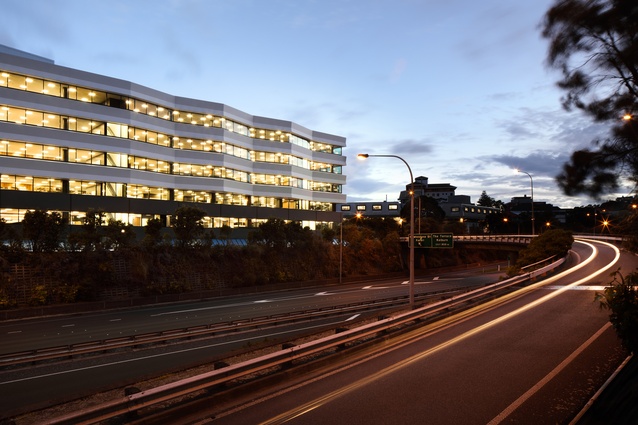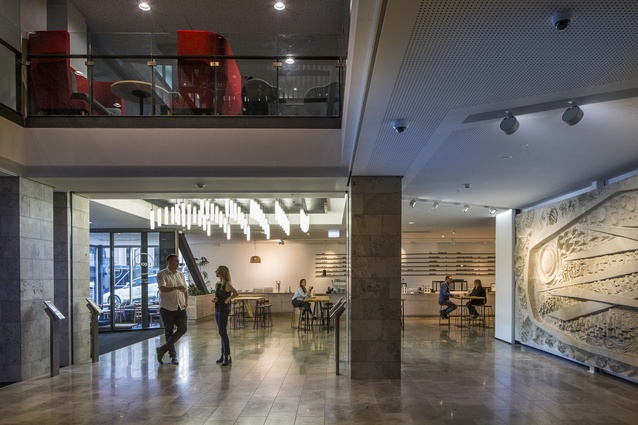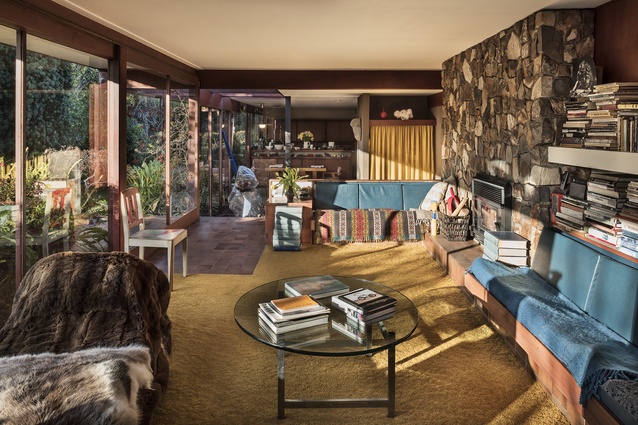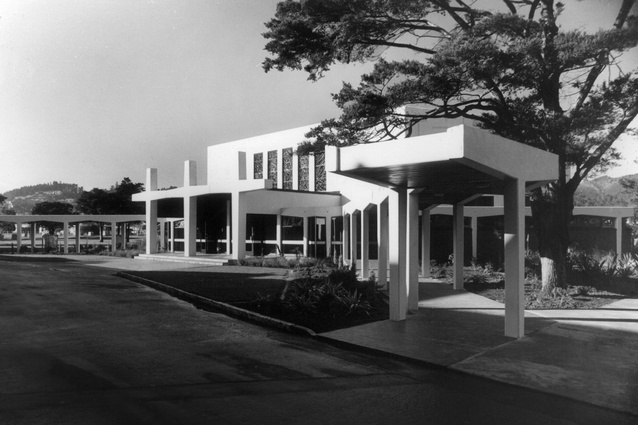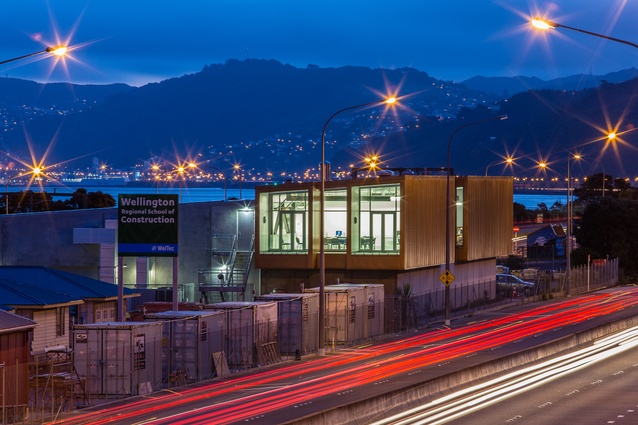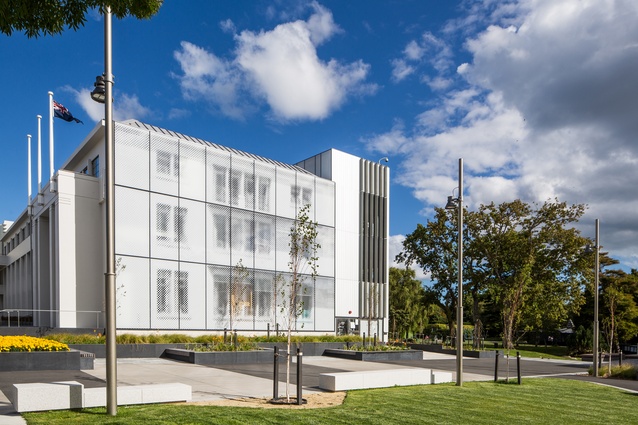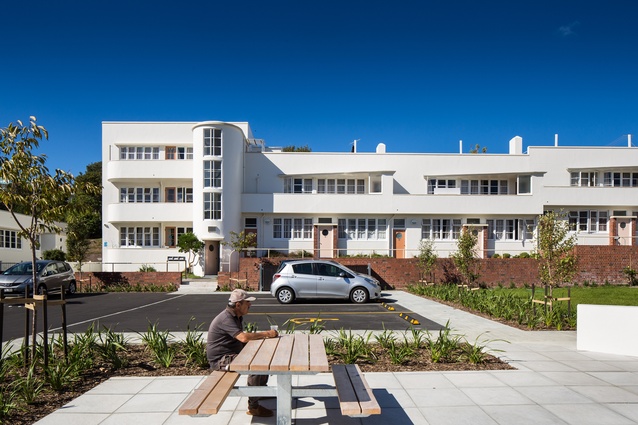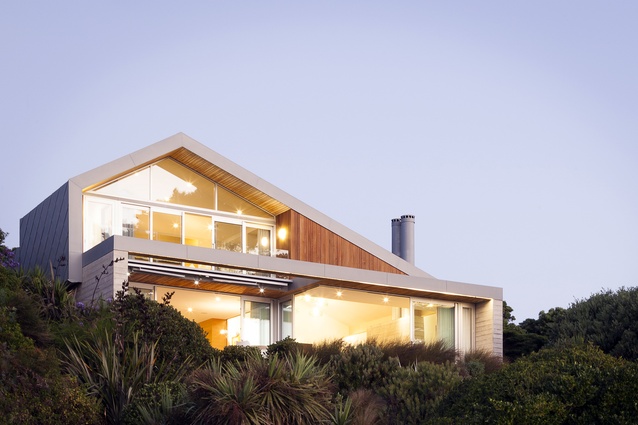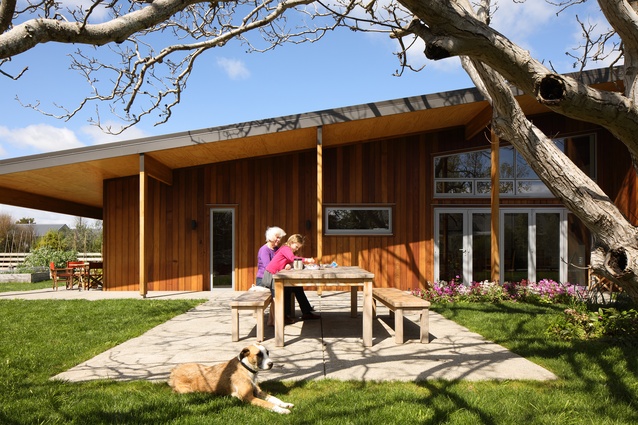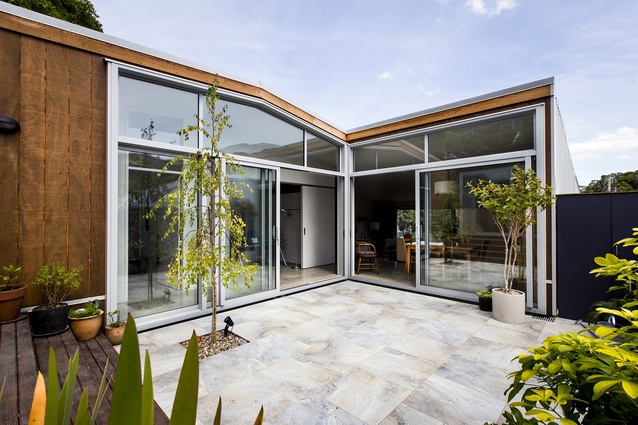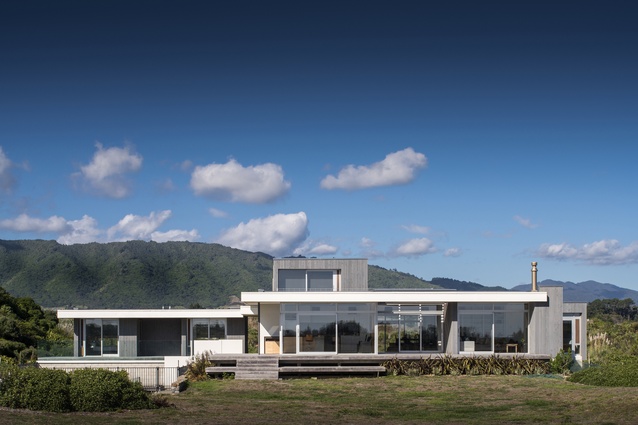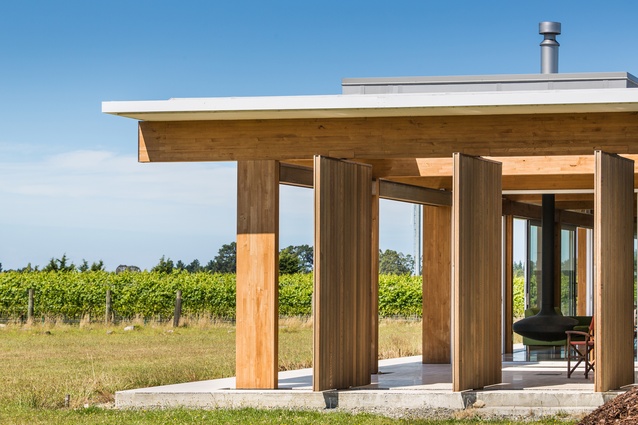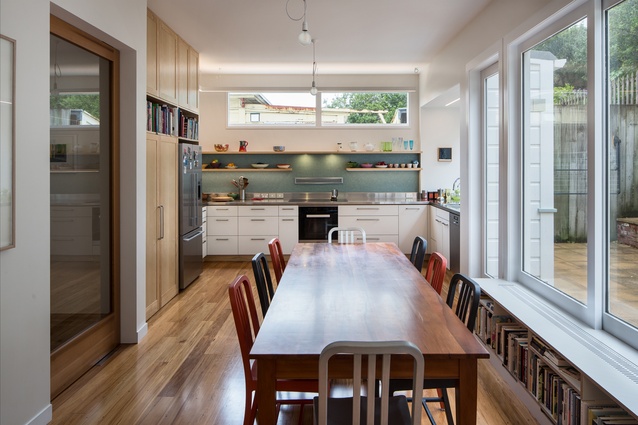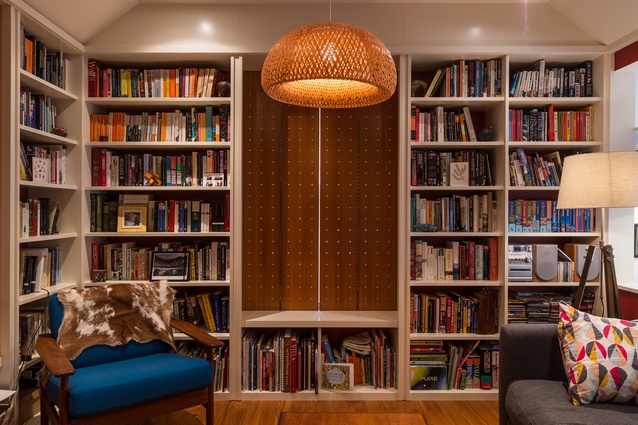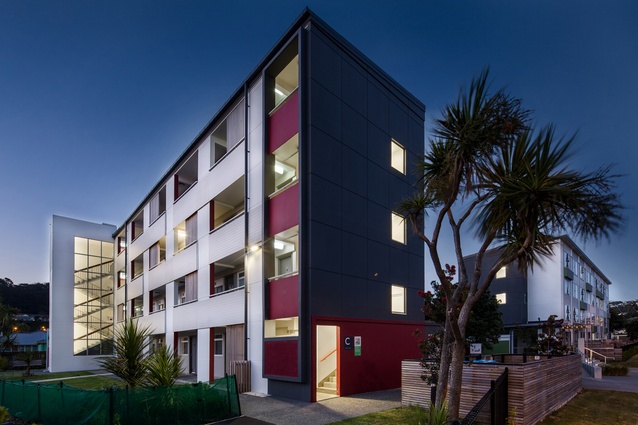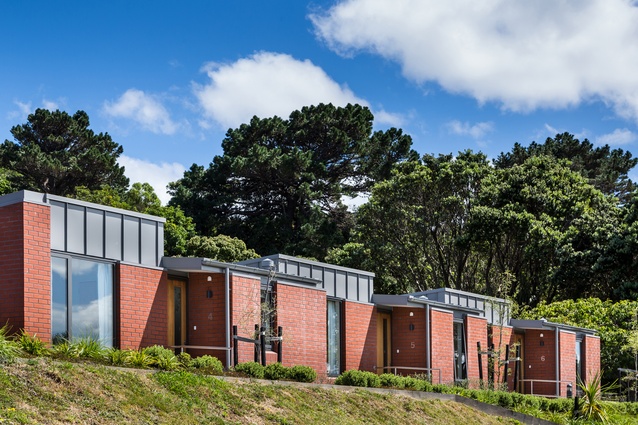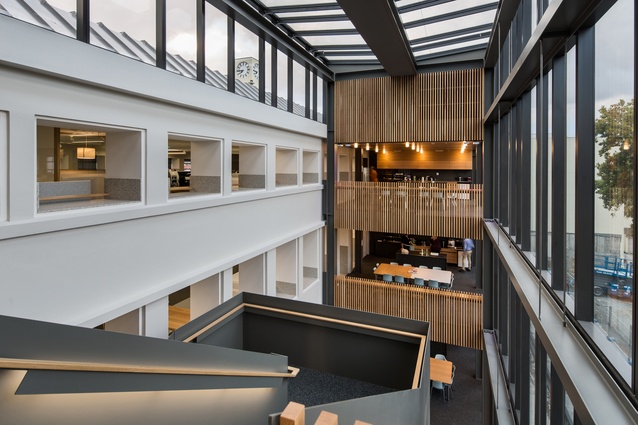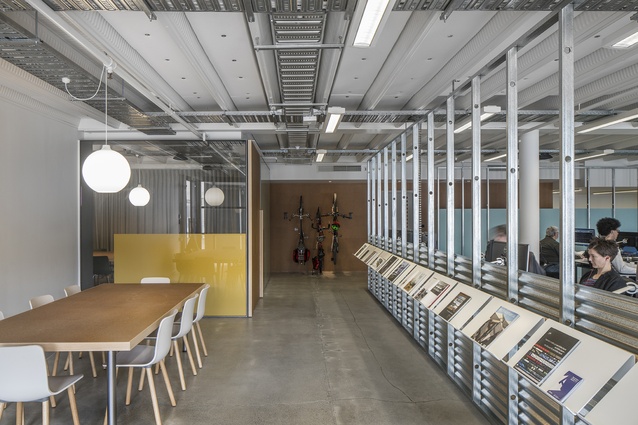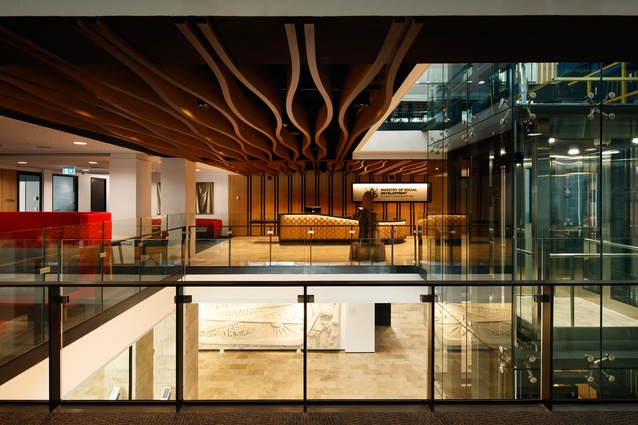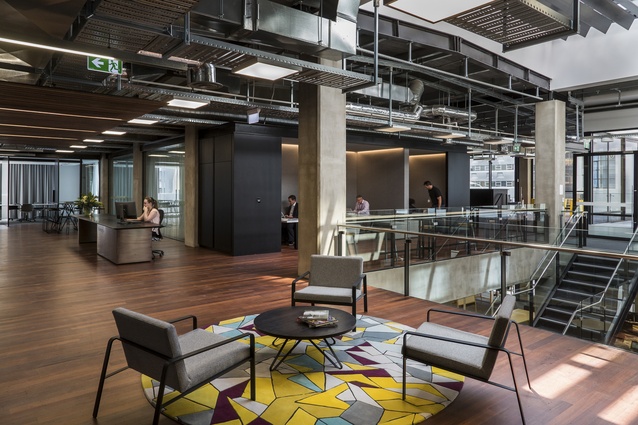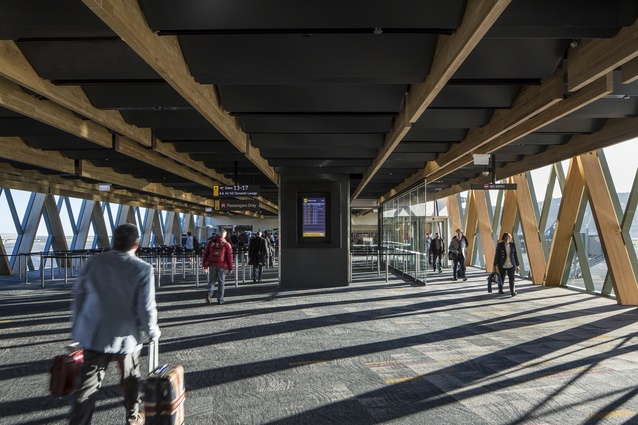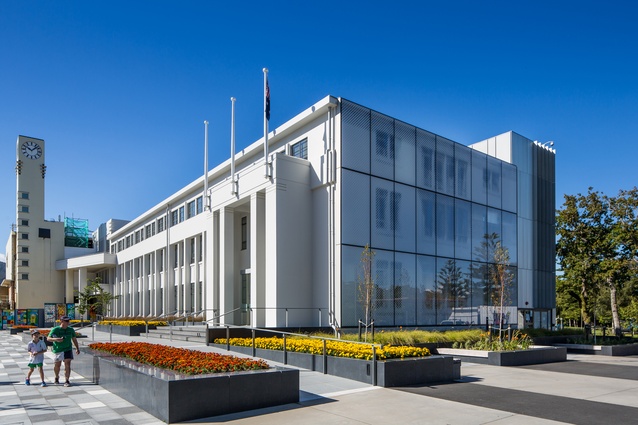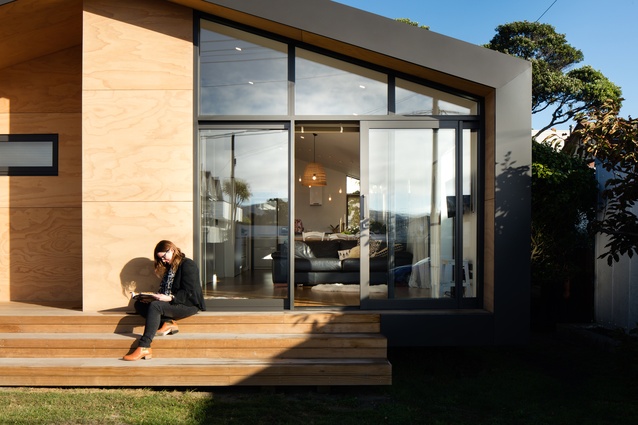Winners: 2017 Wellington Architecture Awards
The 2017 Wellington Architecture Awards were announced at Amokura Gallery, Te Papa Tongarewa, on the evening of Wednesday 17 May, with 24 awards handed out to a wide range of successful projects.
With three awards, the refurbished Hutt City Council Administration Building designed by architecture+ was the most-successful single project. The building won awards for heritage, public and interior architecture.
Convenor Alistair Luke was joined on this year’s jury by Wellington architects Andrew Sexton and Anne Kelly, lay juror Helen Sutch and visiting Auckland architect Nicola Herbst.
Full list of winners with citations below:
COMMERCIAL ARCHITECTURE AWARDS:

Wellington International Airport Limited Terminal South Extension by Warren and Mahoney
The southward extension of the terminal at Wellington Airport initially extrudes the original design and then morphs into a widened connection to the southwest pier combining this with a new connection to the south pier. Full-height glazing within the diagonal lattice of the laminated timber structure creates a transparent conclusion to the terminal, preserving views in all directions. Both from within and without, the precise detailing, combined with the warmth of timber, make these simple gestures utterly convincing. The gusset detail to the south pier gangway is a brilliant solution to the difficulty of such connections.
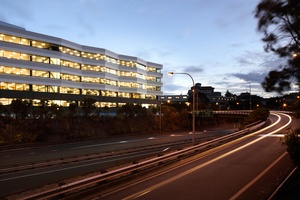
133 Molesworth Street by Studio of Pacific Architecture
The architects have overcome the complexities of working with an existing building that defied the needs of a new, large-scale, open-plan floor space. The previously recessive forms are now a powerful, lineal presence of folded white spandrel panels and dark glazing that evokes speed when seen from the motorway. On the reverse face, the commendable re-use of the existing concrete spandrels combined with the new white panels softens the approach and creates an inviting entry sequence through the lobby to the very well handled new central core. This extremely challenging project has been very successfully realised.
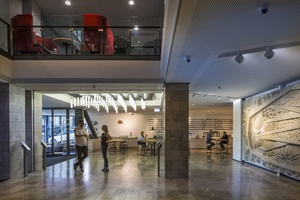
The Aurora Centre by Warren and Mahoney
Aurora Centre impressively solves the challenge of unifying two disparate existing buildings into a cohesive whole. A new pavilion stretches along the length of The Terrace providing cover at street level and an active edge of hospitality and retail. These, and the spacious, sumptuous new foyer are very transparent from the street, increasing the engagement in both directions. The complexity of resolving the seismic upgrades while joining all the separate floor plates into one workable whole is confidently resolved. This building makes a very positive contribution to the broader urban context while satisfying the demanding needs of a large-scale government ministry.
ENDURING ARCHITECTURE AWARDS:
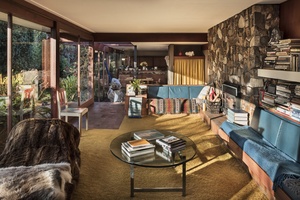
Uren House (1965) by Reginald Uren, Architect
The only house that Reg Uren designed was for his brother, Ron. The genius of this enigmatic house matches the enigma of its architect. Beautifully interwoven with the carefully planned garden, the simple volumes overlap and the seamless glass walls and sliding panels leave you unsure when you are inside or out. There is magic in the subtle use of mirrors to extend spatial perceptions. It is a house of illusions that the current owner still delights in discovering. This is one of New Zealand’s finest modernist residential works, surpassing in composition and detail many that are better known.
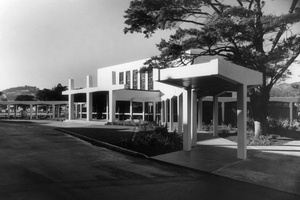
Saint Patrick’s College Chapel, Silverstream (1975) by William Pearson, Architect
This rigorous and formal work is both dramatic and welcoming. The solidity of the chapel volume, imprinted with symbols, grounds the building while the extending arms of the external cloister and aisle embrace it. The considered control of movement and sightlines concludes in the chapel space, which is perfectly fit for the end of the journey. The figure of Christ floats on the windows behind the lectern and superimposes itself on the cross in the courtyard beyond. This a symphony of tightly thought out and dignified architecture that reflects the designer’s deep understanding of movement, liturgy and international works of similar calibre.
EDUCATION AWARD:
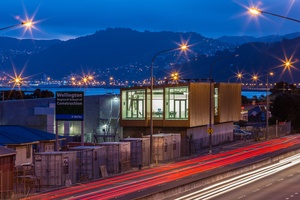
WelTec School of Construction by Designgroup Stapleton Elliott
This new facility proudly celebrates the former nature of the previous containers occupying the site. It reflects in a raw but composed manner the function within, whilst providing a rhythmic and deliberate edge to the motorway adjacent. Against that motorway setting it is a striking building. The open-ended boxes allow a glimpse of occupation from each end. The honest use of materials has continued throughout, with the layering of the container forms above the shed allowing views from above and below. This is a direct but very clever response to a very specific brief with a tight budget.
HERITAGE AWARDS:
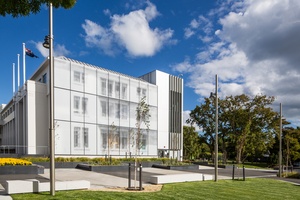
Hutt City Council Administration Building Refurbishment by architecture +
The architects have embraced the heritage values of the existing HCC building of their own volition. Within a very complex reconfiguration and strengthening exercise, the original façade to the north has been painstakingly restored while the southern façade has been brilliantly remembered within the stair, services and hub extension. The original western façade is recalled by a fritted glass curtain wall. The project is an exemplar of heritage being recognised for its value, while not being slavishly adhered to. It is a triumph for that but, combined with all else, the incredible complexity of the realisation is remarkably seamless.
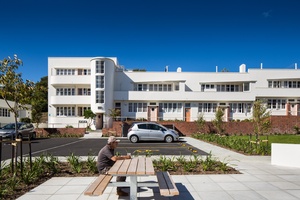
Centennial Flats by Architecture Cubed
The timely and sympathetic refurbishment of the renowned Centennial Flats has restored these Heritage-listed buildings to their former glory. The reinstatement of the central circular hub to its previous function as a community space has been handled with care and respect to the original design intent. The thorough upgrade to the exterior and removal of the dominating two-storey laundry rooms have resulted in a clarity of form and hierarchy. The revised landscaping complements the formal layout of the original design.
Resene Colour Award:
The updated colour scheme subtly respects the building’s heritage and style. Small but clear touches, such as the colour of the front doors, give a sense of individual ownership and identity.
HOUSING AWARDS:
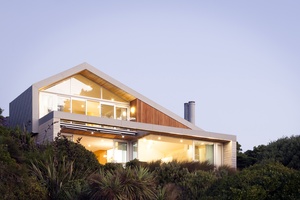
Kirkway House by Designgroup Stapleton Elliott
This house sits purposely on an elongated seafront section. The angled forms of the house extend along the narrow section, divided internally by a generous gallery, allowing the visitor a glimpse of the full view beyond. The living area of the house opens out to the north and west, providing options for exterior dwelling. The material selection and attention to detail, both internally and externally, has been thorough and rigorous, with a roof of zinc scales cloaking the stepped roof. Shuttered concrete walls anchor the adjacent spaces, providing a sense of protection and textural contrast to the timber inside and out.
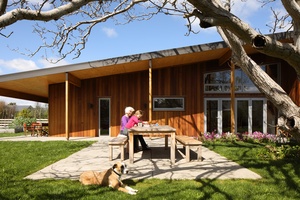
Wairarapa Hay Barn by First Light Studio
Picking up on the shed forms of rural Wairarapa, this seemingly simple wedge-shaped house quickly reveals a delightful composition. The corrugated iron wedge is eroded to create timber clad overhangs and verandahs that shade, invite and create, in combination with the existing walnut tree and stream, a superb variety of external spaces. Internally, the use of volume, as well as the loft interruption to it, continue with a rational consistency. With simple but well composed built-in joinery, the entirety makes for a liveable, warm and harmonious home that is clearly perfectly pitched to its owner’s needs.
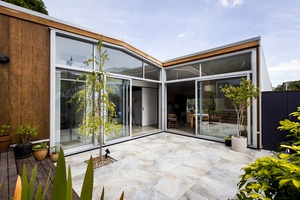
Awarua Street Residence by Foundation Architects
Thoughtfully wrapped around a private outdoor court, this compact infill home on a quintessential Wellington hillside site steps assuredly over three terraces tailored neatly to the underlying topography. Precisely positioned openings allow the home to connect to outdoor spaces, capturing views and sun while astutely preserving privacy from neighbouring dwellings and the road below. The owners’ collection of treasures are joyfully displayed in a modestly crafted palette of interior materials, while the exterior is sheathed in a protective outer skin of steel, cut away only at the courtyard and deck to frame more gentle timber surrounds.
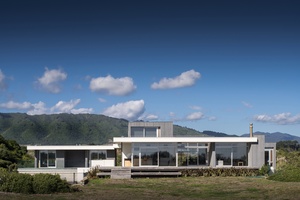
Waikanae House by Herriot Melhuish O’Neill Architects (HMOA)
Viewed on approach, this house appears to be a simple composition of box forms. However, on entering and circulating through it, the composition reveals surprises, subtle complexities and a deft handling that responds to the site and the client needs. From the seaward side it sits horizontally in clever contrast to the verticality of the landward view. In a sense, it inverts the form of Kapiti Island to which it faces. Cuts through the form, glazed and open, capture landward and seaward views. The Waikanae house presents, both simply and complexly, a very well composed and compelling architectural outcome.
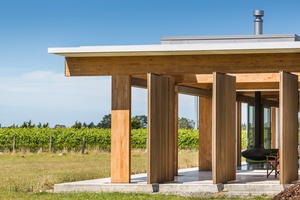
Vineyard House by Novak+Middleton
Resting in its rural environment, this low slung pavilion-like house responds to the client’s wishes for a modernist expression with minimalist detailing and expansive views to its site and beyond. The primary structure is grounded off in-situ exposed concrete walls that define the main spine. The layering of these walls with areas of cedar cladding and carefully crafted joinery insertions creates a composition that belies its simplicity. Although fully glazed between the posts, the eave overhangs combined with the passive and active solar technologies ensure that this highly thought-through home is a joy to live in year round.
HOUSING – ALTERATIONS & ADDITIONS AWARDS:
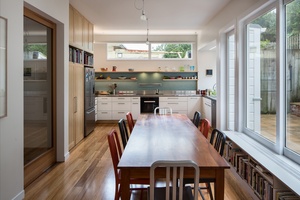
Mount Victoria House Alterations by Mary Daish Architect
Attention to the nuances of occupation, anthropometrics and the craft of making makes this contemporary addition to the existing villa a delight. Detailing throughout is meticulous and painstaking but appears effortless in the result. Material choice and the junctions of materials set up an equally weighted dialogue with the existing fabric. Resisting the standard inside-outside flow between courtyard and living space results in a refreshing take of this common genre. This altered space must be a pleasure to inhabit.
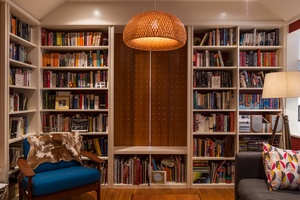
Glenbervie Renovation by Parsonson Architects
This finely crafted reworking of a small, pre-1900s workingman’s cottage cleverly orchestrates the home across three compact scaled split levels. The rooms of the home are overlapped, borrowing light and views, whilst retaining a deft separation which is exceptional within such a small footprint. The original cottage has been sensitively modified and connected to a mid-level kitchen and lower family dining room, all connecting to a deck and tree-filled site beyond. The insertion of floating cabinetry is a light touch with detailing that is intimately tuned to its owner’s needs.
HOUSING – MULTI-UNIT AWARDS:
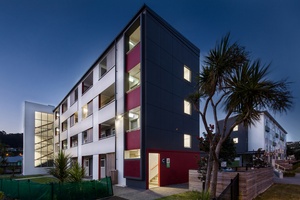
Kotuku Flats Upgrade by Opus Architecture
Working from a very utilitarian and dilapidated base of existing bedsit apartments in four blocks, this upgrade project is exemplary. Fully refurbished apartments now incorporate a mix of one, two and four bedrooms, encouraging a diverse mix of tenants, including families. The site-wide reconfiguration provides a community orientated outcome. Subtle colour and wall plane shifts combined with a timber screening rearticulate the blocks to the extent that the whole looks new rather than patched up. This is a truly outstanding example of a little being made to go a very long way in a critical housing sector.
Resene Colour Award:
Colour is used judiciously but very effectively to give individual identity to the blocks. It is also very much a part of the overall sense of freshness that the upgrade exudes.
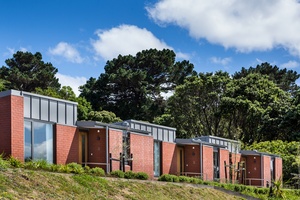
Home of Compassion Sisters’ Housing by Tennent Brown Architects
Set within an enclosure of bush-clad hills this secluded living retreat for the Sisters of Compassion calmly and caringly folds to enclose two sides of a garden court. Red brick columns which embrace the third edge of the court are remnants of a previous building which the new work borrows from. This charming collection of homes employs a restrained composition of materials, with their scale and humanity articulated externally via a switching angular roof. Each home overlooks the central garden court with the interiors are precisely composed through a delightful use of height and light and a judicious placement of materials.
INTERIOR ARCHITECTURE AWARDS:
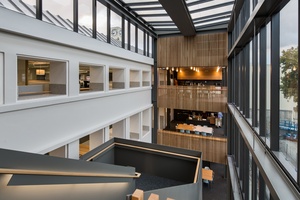
Hutt City Council Administration Building Fitout by architecture+
This fitout has generous communal space and a clarity of program from its public areas through to the staff social spaces. Throughout the building, intelligent consideration has been given to every aspect of the design from planning, to comfort, to visual delight. The well-appointed triple volume atrium and staff hubs leading off it create a visual connection between the workspace floors. Combined with a reconstruction of the original façade, the entire space is visually dynamic and most importantly connects the building’s users with the Civic Gardens. Throughout, the ideas behind the project are convincing and the execution of the details is exquisite.
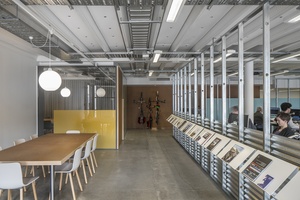
architecture+ Office Fitout by architecture+
The relocation of architecture+ to this Wellington waterfront position results in a clever fitout within the historic Odlins building. The central workspace has been pulled back from the glazed façade allowing a dual and mirrored arcade between inside and out. This interface gives a flexibility to the usage of both interior and exterior spaces, allowing the public to gain a visual insight into the daily workings of the studio. Industrial materiality divides a largely-open space with a rigorous rhythm of subtle screening and division. The corner enclosed meeting room, employing steel, glass and cork surfaces, clearly reflects the firm’s attention to detail and composition.
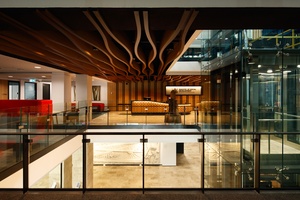
Ministry of Social Development Fitout by Studio of Pacific Architecture
Integrated with the base re-build, this fitout design makes a difficult floor plate work very well. The underlying conception for the project – Tāne Mahuta – generates expressive finishes and colourways that distinguish the floors and create clear orientation. The hubs provide compelling social and gathering spaces. The lineal workplaces are cleverly broken by the interruption of meeting places but also retain the through links from The Terrace to the motorway. This interior is an example of how collaboration between the base build architects and the fitout architects can provide a fully resolved outcome.
Resene Colour Award:
Three alternating colour palettes are used to orientate and distinguish the floors. The colours are drawn from the underlying concept of Tāne Mahuta and give a warmth and vibrancy to the work spaces and social hubs.

Intergen Fitout by Warren and Mahoney Architects
This fitout of a former printing press building neatly picks up on the original industrial aesthetic and transforms it into a compelling modern office environment. The interconnecting stair through the atrium combined with the northern atrium links the three floors together. Reuse of the original flooring is cleverly interwoven into the design. The exposed ceiling and services are thoroughly thought out. Particular design choices, such as the arrangement of the personal lockers and work boards, take this fitout far above the standard. It is very evident that this clearly coordinated environment is a workplace that all of its users enjoy.
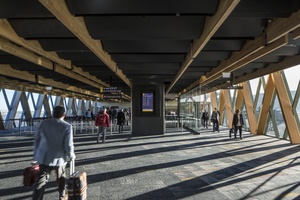
Wellington International Airport Terminal South Expansion by Warren and Mahoney
Continuing from the carefully detailed but strong conceptual ideas in the base build of the south extension, the interior architecture marries clarity with subtle and deft detailing touches. Whilst the materials of the existing terminal building have been replicated, they shift in composition to create a compelling junction with the southwest pier widening. In here the palette is completely altered but not in a way that jars. Laminated timber beams, with concertinaed black perforated panels between, conceal services, provide air distribution, and, importantly, give strong directionality to the pier for ease of passenger orientation.
PUBLIC ARCHITECTURE AWARD:
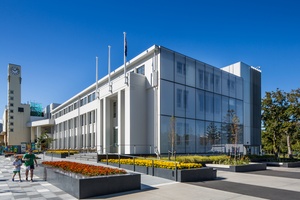
Hutt City Council Administration Building Refurbishment by architecture+
This refurbishment is at the heart of a wider civic upgrade for the council. The original building has been precisely edited and intelligently upgraded with a new parallel annex – confidently and skilfully added to the existing building – containing a light-filled atrium, building services and vertical circulation. The reinsertion of a welcoming entry and introduction of a generous interior street connecting staff and visitors creates a delightful and civilised public environment. Conservation, structural engineering, building services, finely considered planning and detailing are intelligently integrated to create a building that is a joy to both visit and work in.
SMALL PROJECT ARCHITECTURE AWARD:
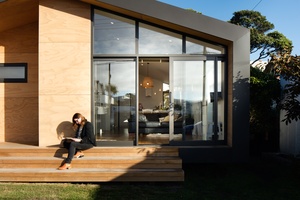
Seatoun House by First Light Studio
This project addresses the concept of the small house – a type that is central for architects given our current housing crisis. The bold form and very efficient planning make a distinctive statement and combine that with a very liveable and surprisingly spacious interior. The house references the whare but subtly shifts it as well. In the comfortable suburb of Seatoun, this small project, delivered on an equally small budget, signals an alternative to the profligacy and sprawl that are otherwise undermining our urban and suburban environments.
All winners of the 2017 Wellington Architecture Awards are eligible for shortlisting in the New Zealand Architecture Awards, which will be decided later in the year, and announced in November.


